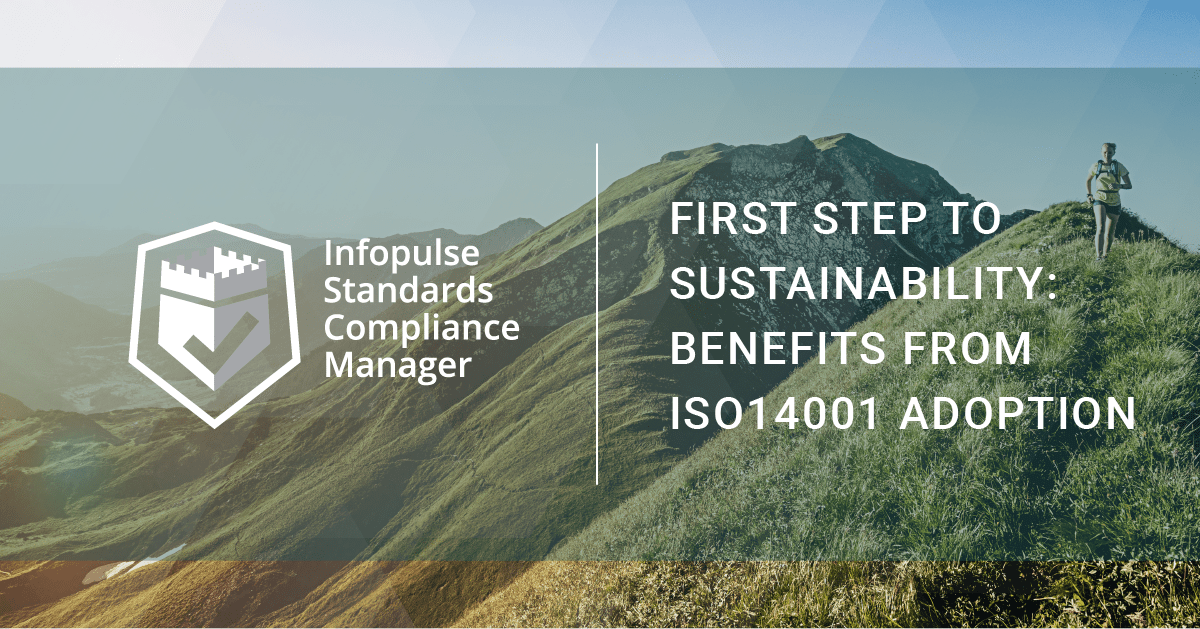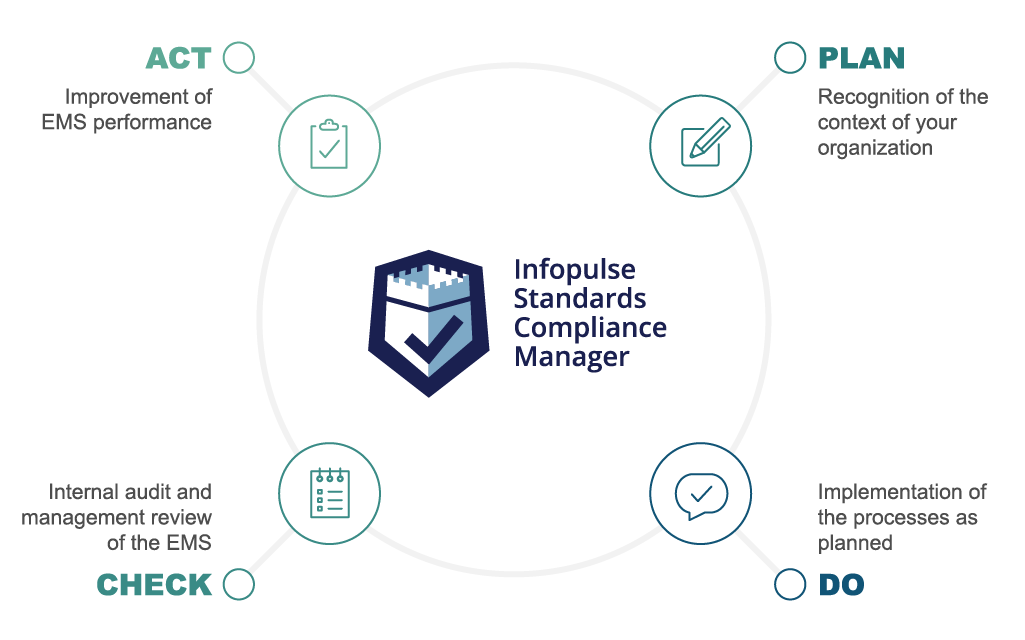First Step to Sustainability: Benefits from ISO14001 Adoption

To overcome this challenge, businesses must establish a strong environmental management system (EMS), which is a set of policies and practices that defines how your business interacts with the environment. To streamline the development of an efficient EMS and thus foster environmental sustainability, improve their corporate image, reduce costs, and promote business growth, organizations need to consider the implementation of the ISO 14001 environmental standard.
In this article, we’ll examine what exactly is the ISO environmental standard, what are its benefits, methods of its implementation, which challenges you can face during the ISO 14001 adoption, and how these challenges can be resolved by utilizing advanced GRC solutions.
Overview of ISO 14001 – Benefits and Implementation Methods
ISO 14001 is an international standard that outlines requirements for a successful EMS. The standard includes a specific framework that an organization can follow during the implementation process. The framework is relevant to any enterprise, irrespective of its size, location, or industry. Its implementation is based on the Plan-Do-Check-Act approach, and subdivided into the following stages:

- Recognizing the context of your organization, its environmental policy, objectives, and determining the support required to achieve the established environmental goals;
- Implementing the processes as planned, while identifying possible areas of improvement;
- Conducting an internal audit and management review of the EMS to evaluate its efficiency;
- Taking further actions to improve the performance of your EMS.
Business Benefits of ISO 14001 Implementation
Creating a Positive Corporate Image
ISO 14001 adoption shows that you value environmental responsibilities, which triggers a positive response from other people and enhances your corporate image. Moreover, promoting a culture of environmental care can increase the customer’s trust and attract new clients and stakeholders.
Enhancing Environmental Performance and Cost-Efficiency
Establishing a robust EMS under the ISO environmental standard framework can decrease the produced waste, improve resource efficiency, and significantly reduce costs. The expenses may be reduced not only due to better resource utilization but also due to the reduced number of incidents that can incur liability costs for environmental harm.
Improving Leadership and Employee Engagement
ISO 14001 implementation requires the active involvement of the company’s top -management to ensure the success of EMS. Business executives can improve their leadership by delegating employees and ensuring that all critical aspects of EMS implementation are discussed on a regular basis. Most importantly, collective efforts to reduce the carbon footprint can increase the employee engagement index, and reduce staff turnover.
Challenges of ISO 14001 Adoption
ISO 14001 adoption is a complex and labor-intensive task. Larger businesses have a sophisticated structure, with various business processes occurring across numerous locations. The implementation of the ISO environmental standard requires close collaboration and integrity to ensure efficient multi-level business coordination. The demand for data and process integrity increases even more because the ISO 14001 implementation is self-managed, which makes it prone to human errors.
Lastly, one other imperative challenge remains high on the agenda for the majority of business owners. A comprehensive understanding of standard compliance is an indispensable part of a successful adoption. It requires carrying out detailed statistical analysis and precise internal audits. These major ISO 14001 constituents are executed through legacy systems, which is time-consuming and inefficient. All of the above-mentioned adoption challenges can be resolved by utilizing advanced GRC solutions.
Leveraging GRC Solutions to Facilitate ISO 14001 Adoption
Employing high-end GRC solutions can significantly streamline the adoption of the ISO environmental standard. GRC solutions can balance the standard requirements with the company’s business objectives and integrate all of the relevant data in a single system. Furthermore, GRC solutions can break down the silos, support decision-making, and ensure effective collaboration across all enterprise levels. Such solutions include dashboards that allow tracking standard compliance in real-time, and automation tools that handle workflows, assessments, reporting and accelerate internal audits. Utilizing GRC solutions can resolve every challenge that may emerge during the ISO 14001 adoption.
Infopulse has developed an all-encompassing integrated GRC platform – Standard Compliance Manager (SCM), which enables businesses to enhance their governance, compliance, and risk management processes.
Contact our experts today to learn more about how SCM can help you with ISO 14001 adoption and what other benefits it can create for your business.
Try Compliance Aspekte For Free
Book a 1-2-1 Live Demo and Obtain a 3-months Non-binding Trial
Effective and easy-to-use IT security management system based on the latest standards and regulations — from planning and establishing the security concept to certification.
